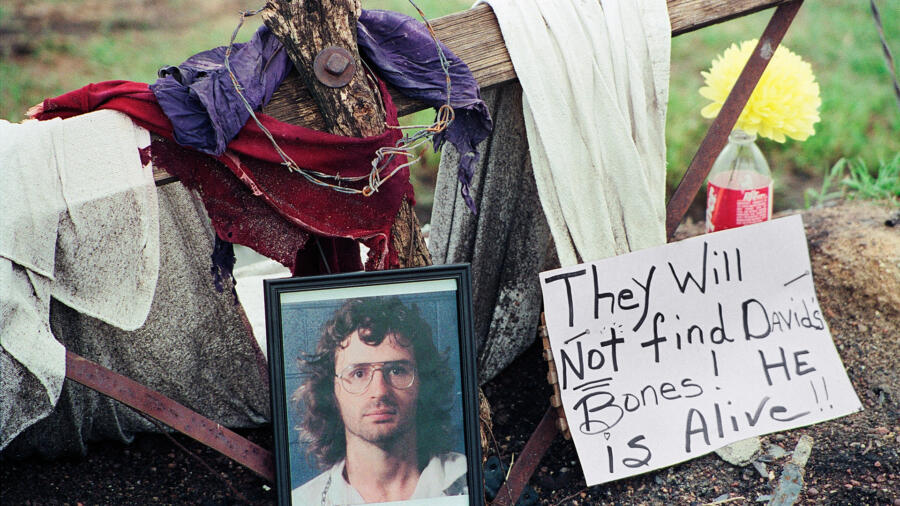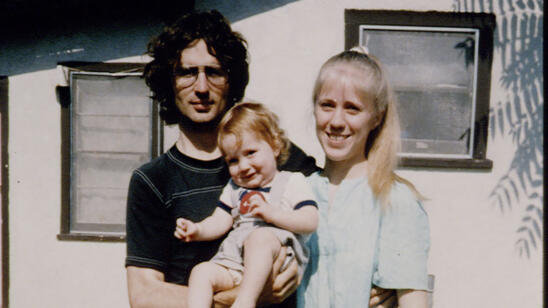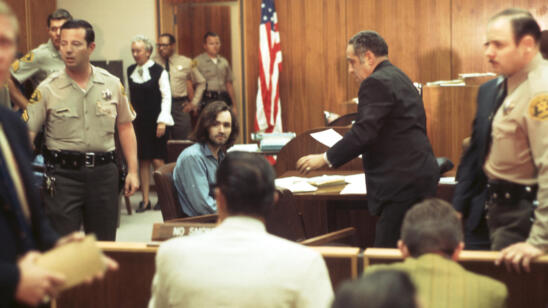To many Americans, the Texas town of Waco has become synonymous with tragedy—ever since the violent, drawn-out 1993 standoff between the federal government and an extremist-religious sect called the Branch Davidians.
The group, led by controversial self-proclaimed prophet David Koresh, was an offshoot of another group called Shepherd’s Rod, which was connected to the Seventh-day Adventists.
Koresh and the Davidians had reportedly been stockpiling weapons at their compound, the Mount Carmel Center, in preparation for the end of the world.
On February 28, 1993, Federal Bureau of Alcohol, Tobacco and Firearms agents stormed the property to search it and arrest Koresh for possessing unlawful weapons. Their plan didn’t go so well, and four FBI agents and six Branch Davidians ended up dead in the ensuing exchange of gunfire. (It’s unclear who took the first shot.)
[Watch episodes of Cults and Extreme Belief in the A&E app.]
The FBI then became embroiled in a 51-day standoff with Koresh at the compound; during this time, negotiators arranged the release of 35 Branch Davidians, including 21 children. But on April 19, 1993, agents moved to take decisive—some say extreme or unwarranted—action in an attempt to lure Koresh and his followers out: They began launching a tear-gas assault. The building caught fire (the cause of the fire is still debated), and 76 Branch Davidians—which included 28 children—died in the flames.
Koresh, then 33, died of a gunshot wound to the head during the course of the fire. No one knows who killed him or if he killed himself. But that’s not the only unanswered question when it comes to the infamous siege. Here are some other debates around and other little-known facts about the Waco siege and Koresh.
David Koresh was mocked during his childhood (and his real name wasn’t David Koresh).
David Koresh was born Vernon Wayne Howell in Houston, Texas in 1959. His mom was 15 when she had him, and Koresh’s grandparents ended up raising him.
Other students made fun of him for being dyslexic and gave him the nickname “Mr. Retardo.” During the Waco siege, Koresh opened up to the FBI negotiators who, during a total of 754 phone calls, were trying to encourage him to turn himself in, and Koresh reportedly told them his childhood had been lonely.
Branch Davidians still exist today.
The group didn’t completely die out following the Waco disaster. Nine Davidians escaped the fire, and the group still hasn’t completely disintegrated. A new group formed called “Branch, The Lord Our Righteousness” with a new compound in the old Waco space. They have a new leader and various residents.
Some Davidians were still meeting regularly for Bible study in 2013, and some believed that Koresh might come back from the dead and lead them again. “David came to give us a message and a hope,” one survivor, Sheila Martin, told People magazine. “We hope to see him again. Our regret is only that we didn’t serve God better.”
There is still debate about whether the Branch Davidians were truly a ‘cult.’
Though the dominant narrative at the time of the siege was that Koresh was a sketchy cult leader, there has never been consensus about whether the group was a legitimate cult. Because no one knew much about the Branch Davidians except group members themselves, the media didn’t get much information about who they were, what they believed and how they lived until it was too late. And negative conclusions were already commonplace by then.
“The term ‘cult’ is rather stagnant, and implies a binary category—’cult’ vs. ‘non-cult’—that actually does not exist, says Dr. Steve Eichel, a psychologist and cult specialist. “Instead, many cult experts prefer to talk about cultic relationships and cultic processes, [which] exist on a continuum and can vary from group to group.”
The Branch Davidians were certainly an extreme and problematic religion: Waco survivors reported various forms of insidious child abuse, with girls as young as 11 being forced to have sex with Koresh. But there’s no definitive answer when it comes to the cult question.
“What the word ‘cult’ really means is that your religion is smaller than mine,” says Dick J. Reavis, who reported on the Waco siege for The Dallas Observer and later wrote the book Ashes of Waco. “There was a man who had 12 disciples and performed miracles … If Koresh was a cult leader, maybe Jesus was; maybe the Pope is.”
Some experts have also argued that the government used the “cult” excuse to rationalize the arguably excessive force it used against the Davidians during the standoff.
David Koresh was once tried for attempted murder.
Koresh got involved with the Branch Davidians when he was 22 years old, and soon became embroiled in an affair with the group’s president, Lois Roden, who was then in her 60s. (He reportedly told her he was destined to father a child with her.) He tried to seize control of the group after Lois passed away—he literally fought her son, George Roden, for control. George Roden had been opposed to Koresh’s relationship with his mom and felt Koresh had brainwashed her.
During this fight, Roden was shot in the chest and hands; Koresh was tried for attempted murder, but was let go after a mistrial.
Koresh, a rock guitarist, was obsessed with music.
In addition to his passion for Amageddon and sex—according to The Los Angeles Times, he had multiple underage wives and was rumored to sexually abuse girls—Koresh was obsessed with rock ‘n’ roll. In fact, when he was in his early 20s, he moved to Hollywood with the intention of becoming a rock star. It didn’t pan out, and he headed to Waco, changed his name and reportedly began trying to attract “groupies” of a different kind.
He produced T-shirts that read “David Koresh: God Rocks,” and continued playing in Christian bands throughout his life. You can still find his music online.
The government’s role in the standoff is a contentious topic for many experts.
“There are a whole bunch of unknowns [when it comes to Waco],” says Reavis. “Like who shot first, and who is responsible for the fire. I don’t know the answer to a lot of these questions, but I do know that the FBI and ATF were negligent.”
Reavis is not alone in that belief. Journalist Darcey Steinke, who covered the standoff for SPIN as it was happening, later told the magazine she felt the government was to blame for how things went down. “I think it was the government’s fault… Koresh jogged everyday at the same time on the same route [before the siege]. And so if they wanted to take him they could have just pulled up in a police car and arrested him,” she said. “It was insane to come to the compound of an obviously unstable person—who you know has a ton of weapons—with heavily armed ATF agents.”
Reavis also believes the government wasn’t properly educated about Koresh and his followers before they decided to confront the group so aggressively. “The Davidians were exactly what you’d expect them to be if you knew their theology [and had done any research beforehand]. But if the FBI had known what they were all about before they started, they would have never done the raid,” he says. “It was a botched deal. The FBI has since reformed the way it deals with standoffs.”
Related Features:
Waco: Madman or Messiah?: Watch the 2-Part Special
How Police Chaplains Help First Responders During (and After) Tragedies


